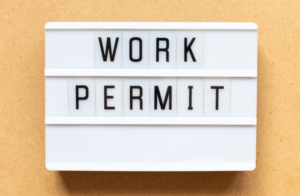Deciding to close a company is as tricky as shaping it. Honestly, it might be a little more challenging than you think because it is not just an idea anymore. You need to manage the investors, shareholders, company officers, employees, and even creditors. But, however overwhelming it might get, if you make the right choice, the process can get much more manageable. To help you make an informed decision, we have put together this guide to take you through the different ways of closing down a company in Singapore.
Why do Companies Close?
Well, there could be many reasons why a company would take the step of closing its operations. It could either be voluntarily or due to a court order. While it is really disheartening to let go of something you built from scratch, sometimes you got to do what you got to do.
Let’s consider you had a great business idea, and you chalked out an equally great plan on how to give it shape. You start your dream company, but eventually, it doesn’t work out. It is an established fact that most startups don’t work out or fail to make it big enough to continue their operations. There are various reasons why a company doesn’t do well even though everything is in place — the most common being improper planning and mismanagement.
Proper management involves planning sustainably, setting practical goals, financial, and foreseeing feasible operations. But even after so much planning, there will always be a 1% chance of failure because let’s face it; there will always be something that one cannot plan for. Take this global covid pandemic, for example. Even though the government has initiated plenty of support schemes like the stabilization and support package, stimulus package, and the resilience budget, the economy has suffered along with the businesses.
There are mainly two ways to close a company in Singapore – winding up and striking off. In this article, we’ll explain both these ways to help you decide which route to choose.
Ways to Close a Company
Winding Up a Company
Winding up simply means wrapping up all the company’s operations along with any assets it may possess. It is the process by which the company officially requests liquidation – converting the assets into cash and then paying off all the liabilities and debts. A company can decide to wind up either while it is still solvent or after being declared insolvent.
There are mainly three ways to go about it:
Voluntary Wind Up by the Members
A company can take this path when the company directors decide to wind up when its solvent and is confident that it would be able to pay off its debts in full within the next 12 months after the application.
To initiate the winding-up process, the following steps need to be followed:
- The directors need to make a thorough inquiry into the company’s affairs and propose to wind up the company if the need arises in the directors’ meeting.
- Once decided, the Declaration of Solvency needs to be filed with the Registrar along with the statement of affairs. The majority of directors should sign the declaration.
- Send a notice of an Extraordinary General Meeting of members (EGM) within five weeks to pass a Special Resolution to wind up the company and an ordinary resolution to appoint a liquidator and decide on their remuneration.
- After the resolution is passed, the company should appoint the said liquidator and publish a notice of the appointment with a copy of a Statutory Declaration within 14 days in the English, Malay, Chinese, and Tamil language newspapers.
- Pass another special resolution empowering the liquidator to divide all of the properties and assets of the company among the shareholders.
- File the special resolution with ACRA within seven days and publish the resolution notice in one or more Singapore local newspapers within ten days.
- Notify IRAS for tax clearance by submitting a final set of management account and tax computations until the date of the business cessation.
- Once IRAS confirms the tax clearance, the final meeting needs to be scheduled and the final advertisement to be published.
- In the final general meeting, the liquidator needs to share the course of action and present the company’s final accounts, also showing how the company’s assets were distributed.
- Within seven days of the meeting, the liquidator has to lodge with ACRA and the Official Receiver a return stating that the meeting was held and attach a copy of the accounts.
- Three months after the return has been lodged, the company will be declared dissolved. But the court can declare the dissolution of a company to be void at any time within two years after the date of the dissolution.
Voluntary Wind Up by the Creditors
A company might decide to take this option if its directors believe they can no longer continue their business because of its liabilities and they won’t be able to repay their debts within 12 months of the commencement of the winding-up, and no declaration of solvency is filed.
In this case, the company members themselves file for winding up and not the creditors. But the creditors have a say in taking a call if the company should be wound up or not. Also, the creditors are the ones who need to decide on who should be appointed as the liquidator and hold a creditor’s meeting.
The process of winding up by the creditors is the same as winding up by members once the creditor is in favor of the dissolution.
Compulsory Wind Up
A compulsory wind-up happens when either a creditor, shareholders, liquidator, or receiver files for the wind-up instead of the company’s owners.
Compulsory wind up can happen due to the following reasons:
- Insolvency
- Failure to lodge statutory reports
- Failure to hold statutory meetings like AGMs
- Failure to start business operations within a year from its incorporation
- Use of company for illegal purposes
To initiate the process, an Originating Summons has to be filed in court. The court then appoints the liquidator to start the winding-up process. If no liquidator is appointed, the Official Receiver shall be the liquidator of the company. The liquidator would need to file the notice of appointment of the liquidator and advertise the winding up of the company in English, Malay, Chinese and Tamil languages local daily newspapers within 14 days.
Striking off
Although both of the methods result in a liquidation of the company and eventually ceasing to exist, striking off a company is easier and less time-consuming. A company can opt for this in case of no or minimal liabilities. There can be multiple reasons for closing a company, even when there are no debts or creditors. The company might not be in operations, might not be needed anymore or is no longer profitable.
Who is Eligible?
A company has to satisfy these requirements to apply for strike-off:
- It should have ceased trading or not have commenced business since incorporation.
- No underlying debt to any government organization
- No debts to any of its creditors
- Must not be involved in any legal proceedings
- Should not have any contingencies or liabilities or the possibility of one in the near future
- The application must be authorized by all the directors/ board members of the company.
Process
The company must apply with ACRA online through BizFile+. This application can be filed by any director, member, or agent after proper authorization.
ACRA will send a notice to the company’s registered office address and its members once it has reasonable reason to believe that the company is not carrying on business and all the documents are in order. After a satisfactory view, within 30 days of application ACRA will publish the company’s name in the government gazette. This is known as the first gazette.
Finally, after 60 days from the first gazette notification and if there are no objections, ACRA will proceed with the final gazette notification. During this process, it will again register the company’s name in the government gazette to mark its final closure. The date of which will be noted as the date of dissolution.
What Route Should You Choose – Winding Up or Striking off
Before looking at the options, the first thing that matters is the state of your company. If the company is insolvent, you can only go for winding up. But if you have the choice, i.e., the company is solvent or has no debts, you can go for either of them. While both seem the same, striking off might be the first choice in most cases in Singapore. The process officially takes only four months, whereas winding up can take years to settle the accounts.
Striking off is the cheaper of the two options. This is because it does not involve any liquidation cost, and there are fewer chances of any discrepancies and objections. You can also engage a corporate service provider to help you with the striking-off process. But in case the members can liquidate better on their own or can not come to an agreement, then winding up works best.
Closing A Foreign Company
In the case of a foreign branch, the company has to apply to both ACRA and IRAS to initiate its closure. It has to lodge a “notice by the agent of a foreign company of liquidation or dissolution of a company” via BizFile. After which, the company can proceed with any of the above-mentioned ways, which apply to all the local companies in Singapore.
Well, it might not be an as easy and step-by-step a process to close a company down as it sounds here. While legal procedures are compulsory to follow, there might be unforeseen events too. But with the right legal help and understanding of the system, the whole process might become less overwhelming. All in all, closing a company in Singapore can get as complicated as in any other country, either by striking off or winding up. But the first step is to make the right decision and then seek the right legal help.
![]() Learn more about our services:
Learn more about our services:
- Starting a company? Check out our company incorporation service.
- Need a company secretary? Check out our company secretary service.
- Need a professional to handle your accounting? Check out our bookkeeping service.
- Need a professional to handle your accounting? Check out our bookkeeping plan.




